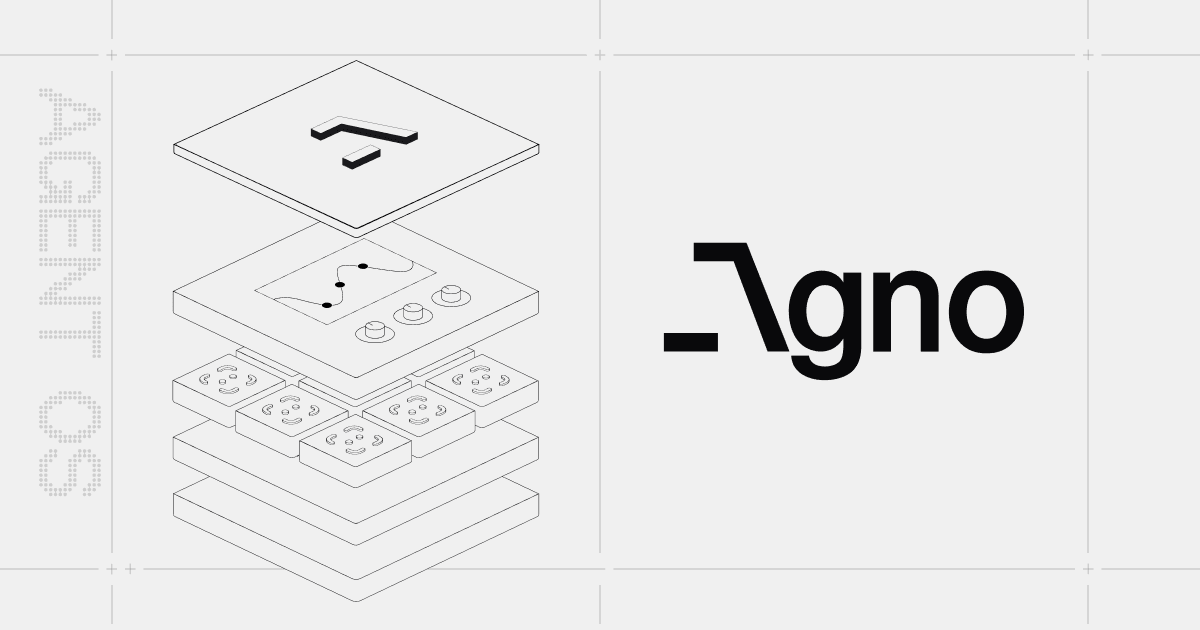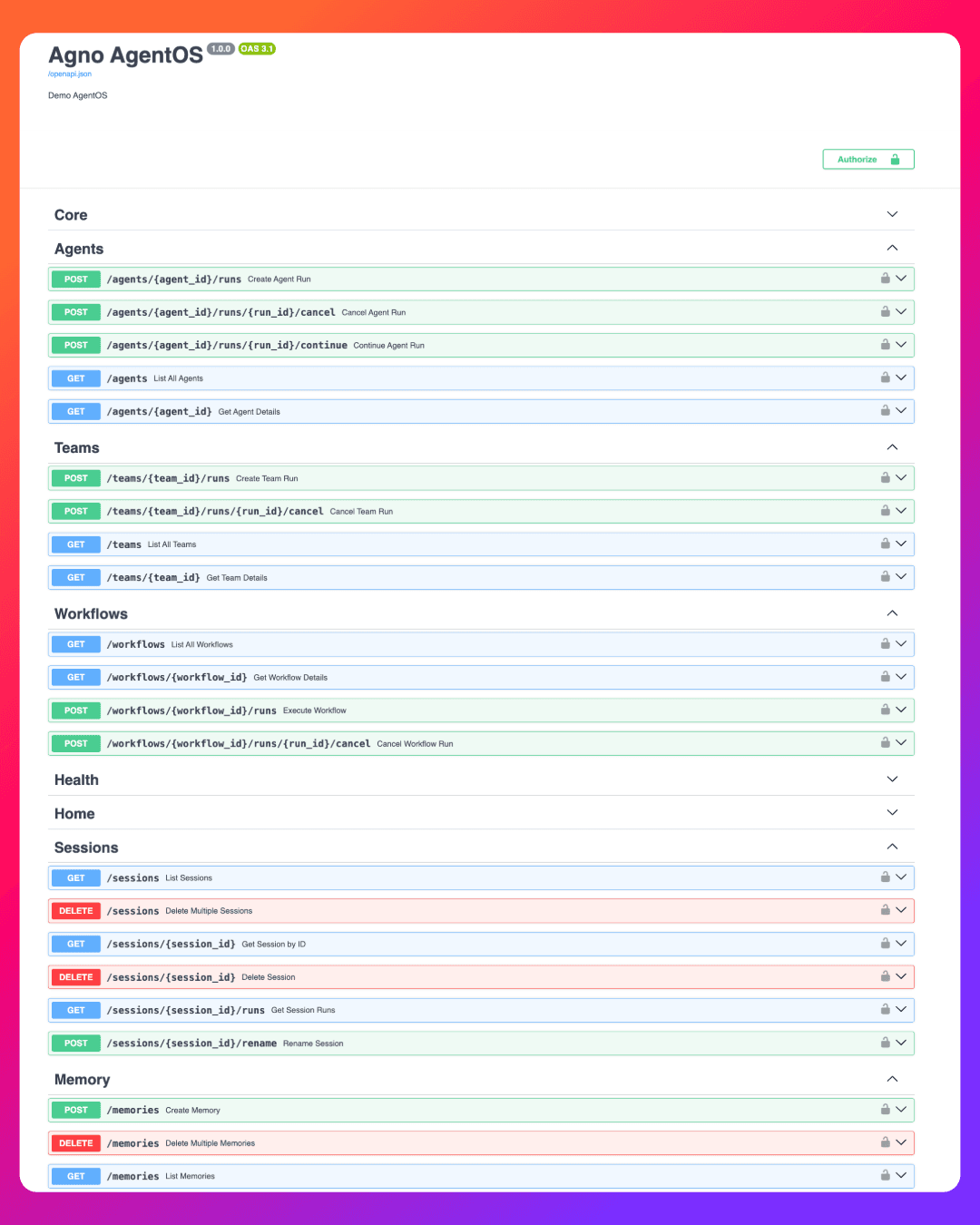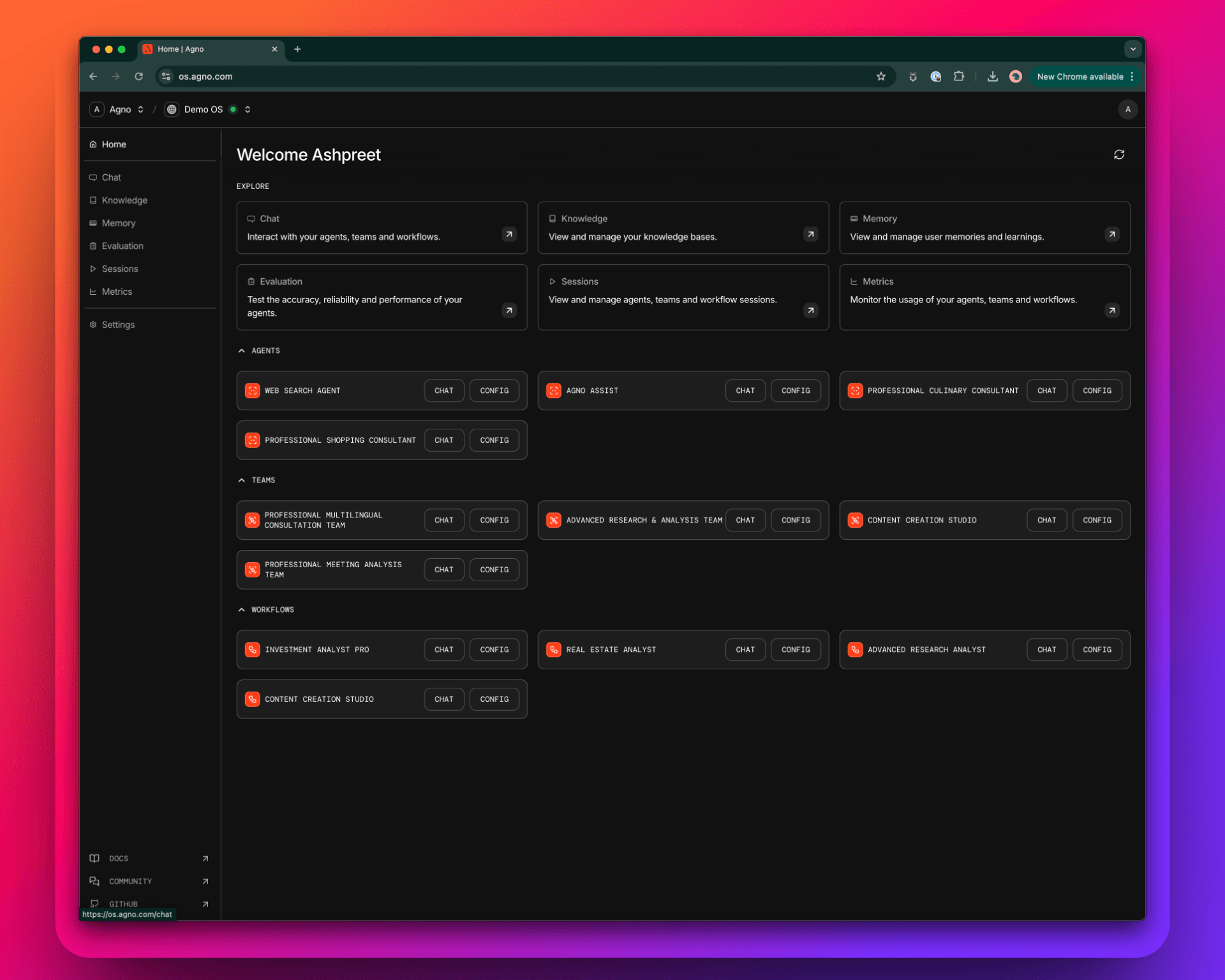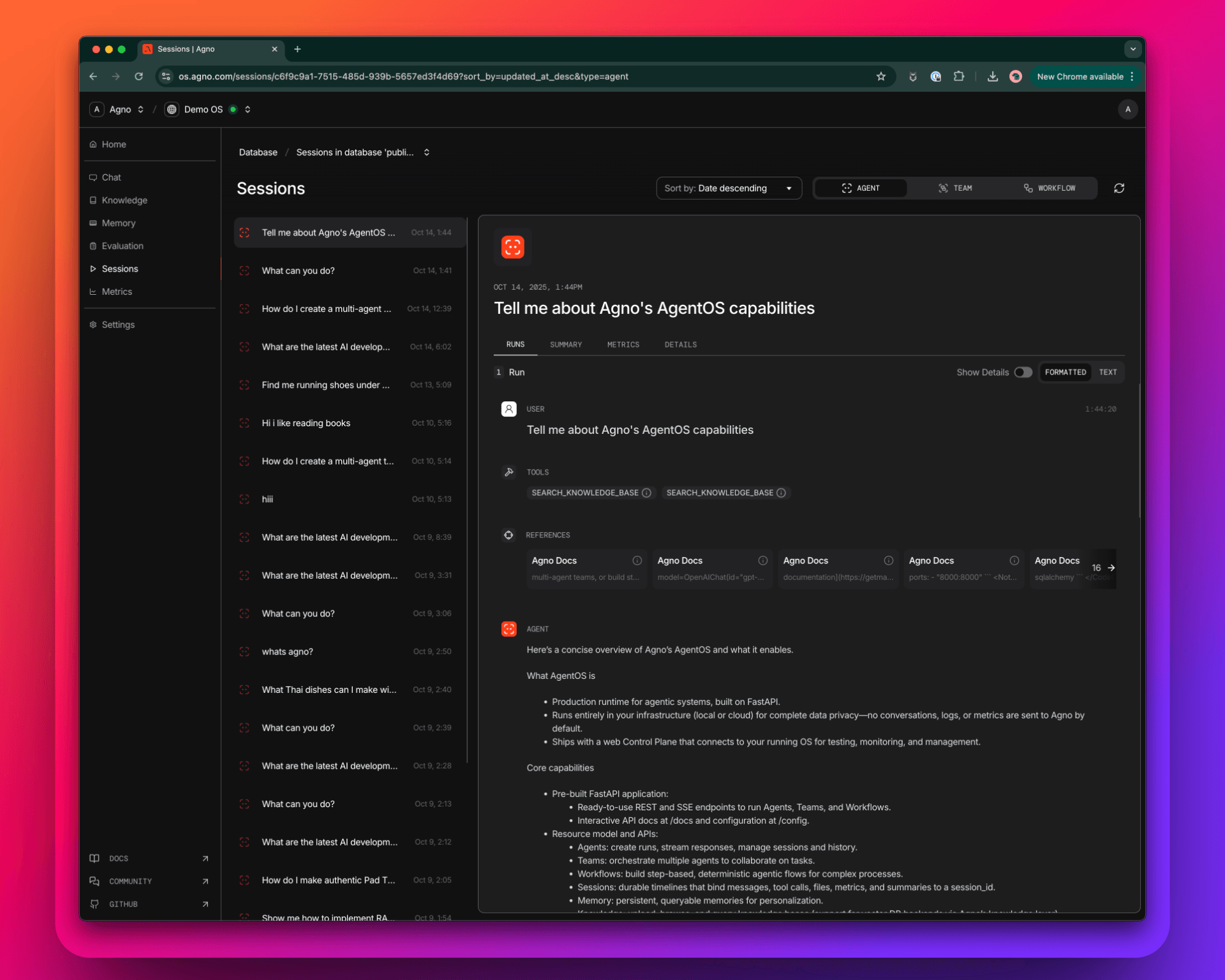Introducing Agno
✨ The Multi-Agent Framework, Runtime, and UI.

Over the past 3 years, I've been obsessed with building the perfect harness for multi-agent systems. A mission to deliver the best system for building, deploying and scaling agentic software.
Today, Agno is used by thousands of builders at the largest companies in the world, including 3 of the fortune 5. Let's dive in.
What is Agno?
Agno is a multi-agent framework, runtime, and UI. It takes a systems engineering approach to agent development by delivering 3 tightly coupled components:
- Framework: for building multi-agent systems.
- Runtime: for deploying multi-agent systems.
- UI: for managing multi-agent systems.
These 3 components form the harness for the perfect agentic system.
Can you build these yourself? Absolutely. But Agno gives you speed, speed gives you momentum, and momentum is everything.
Enough talk, let's see some code.
Here's a fully working Agent, with conversation history, access to tools via MCP, deployed as a FastAPI app - in 20 lines of code.
from agno.agent import Agent
from agno.db.sqlite import SqliteDb
from agno.models.anthropic import Claude
from agno.os import AgentOS
from agno.tools.mcp import MCPTools
# ************* Create Agent *************
agno_agent = Agent(
name="Agno Agent",
model=Claude(id="claude-sonnet-4-5"),
db=SqliteDb(db_file="agno.db"),
tools=[MCPTools(url="https://docs.agno.com/mcp", transport="streamable-http")],
add_history_to_context=True,
markdown=True,
)
# ************* Create AgentOS *************
agent_os = AgentOS(agents=[agno_agent])
app = agent_os.get_app()
Run your AgentOS using fastapi dev agno_agent.py and chat with it on the AgentOS UI.
Deploy your FastAPI app to your cloud of choice, and voilà, you're live in production. It's impossible to move this quickly without Agno.
✨ Part I: The Framework
Agent Engineering is an exercise in iteration. You can't iterate if you don't have a v0.1. A batteries included setup gets your agent in the hands of your internal team. Then you can edit in a loop.
Agno delivers a full-featured, performance-optimized agent framework with every primitive you can think of. Session storage, memory, knowledge (RAG), context management, tools (pre-built and MCP), guardrails, dependency injection, human in the loop, and more. Every part of agent execution is customizable via pre-hooks, post-hooks, and state management, so you're never boxed into default behavior.
Agents are completely type-safe, you can use them as chatbots (string input, string output) or with structured inputs and outputs. Not only that, Agents can use separate parser-models to generate structured outputs, so reasoning is not compromised (only available on Agno).
✨ The Multi-Agent Paradox
The big debate in multi-agent systems is whether agents should execute other sub-agents (handoff-approach), or the developer should programmatically define the flow of execution (workflow-approach).
The answer: why not both?
With Agno, Agents can be executed by themselves, as part of a multi-agent Team (autonomous execution) or a step-based Workflow (controlled execution). Your use-case determines your approach.
Agent Teams have a shared state, agentic context management (i.e. the team leader manages the context for the team), shared memory and knowledge. Teams can also execute other teams, or workflows.
Workflows are deterministic, where each step can be an agent, team, workflow, or a plain old python function. Steps can be parallelized, branched, run via conditional logic or loops.
There's so much more I can cover here, but i'll save that for the docs. The gist is, when building Agents, my goal is to get to v0.1 within a few hours and iterate from there. Agno gives me that.
New agent engineers think that building the solution is the hard part - NO. Finding the right use-case is the hard part. To do that, you need to tackle 3, 5, or 10 different problems. Agno gets you to use-case #10, which is where the magic happens.
✨ Part II: The Runtime
Seasoned builders know that to build successful agentic products, you need to iterate on multiple variations before you hit gold. Also:
- You're not going to build by yourself, you need to get it in the hands of your team quickly (especially the non-technical folks).
- You need some sort of system to test, serve and integrate with your product as quickly as possible (to get user feedback).
This means you need to build an API to serve your agents, your product will integrate with this API via REST or WebSockets. You also need a UI to test, monitor, debug and manage your system.
✨ You need an AI backend.
This is where the AgentOS comes in. In the simplest terms, it's a FastAPI application with pre-built endpoints for serving your agents, teams and workflows. You can also manage knowledge bases, user memories, agent sessions, and evaluate your system in real-time.
The AgentOS is a high-performance runtime for multi-agent systems. It gives you a ready-to-use FastAPI app for deploying your agents, and an integrated UI for testing, monitoring and managing them.
Deploy your AgentOS to your cloud of choice. Session data, knowledge, memories, all live in your database. No data ever leaves your system.
In my experience, once you have a semblence of an Agent you like, you need to get it in the hands of your team and early users quickly. The pre-built api endpoints give you such an incredible headstart that its almost a no-brainer to use.
Here are the pre-built api endpoints, ready to use:

✨ Part III: The Control Plane
Wait, there's more?
The AgentOS comes with a web interface that connects directly to the AgentOS runtime (using the pre-built api endpoints). It's an novel architecture, where the web app (running in your browser) connects directly to the AgentOS runtime. You can test (chat and run) your agents, teams and workflows, manage knowledge bases, user memories, and evaluate your system in real-time. Here's how it looks:

If you're using a tracing service, this will change how you look at things. You're not sending any data out, you're not paying for retention costs, and you're not worrying about data privacy. The app pulls in sessions directly from the Agent's database and show's them:

The traces and runtime data is stored in your database, and the AgentOS UI connects from your browser to the AgentOS runtime.
Its a novel architecture designed to give you complete data ownership:
- Your Infrastructure, Your Data: Your AgentOS runs in your cloud.
- Zero Data Transmission: No conversations, logs, or metrics are sent to external services. They belong to you.
- Private by Default: All processing, storage, and analytics happen in your environment.
Personally, I'm surprised we collectively agreed to hand over every user interaction to tracing companies. Just the retention issues are enough to make you think twice, let alone the data privacy concerns.
For companies building agents, Agno delivers the complete solution.
Unless you're an infra or devtools company, you're focused on solving user problems. Agno free's up your mental capacity so you can a) find the right problem to tackle, b) build your MVP quickly, and c) iterate and improve your product.
Thousands of builders choose Agno, thank you for letting us be a part of your journey ✨
Want to build with Agno?
-
Agno documentation: agno.link/docs
-
Signup for the AgentOS: os.agno.com
-
Star Agno on Github: agno.link/gh
Read more on agno.com